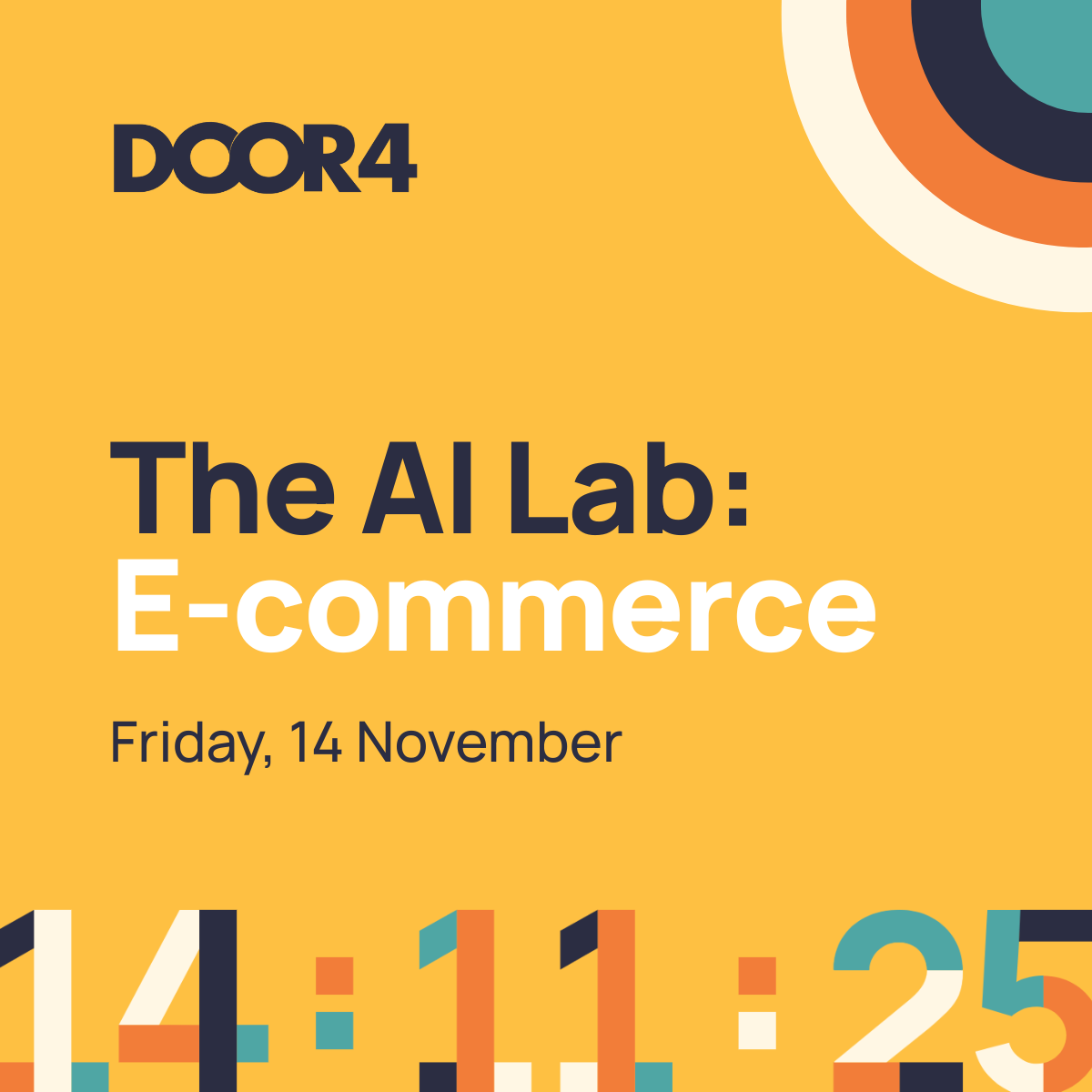Ready to explore the possibilities?
Request a quick call with our team to find out how the Innovation Explorer program can help your business take its next big leap into AI and automation.

The Living, Learning, Buying Paradigm: Rethinking the Marketing Funnel
The Living, Learning, Buying consumer context: Why thinking in and out of market will simplify your life, forget the funnel
 The traditional marketing funnel, epitomised by models like AIDA (Attention, Interest, Desire, Action) and See-Think-Do-Care, is a lazy tool for marketers – we’ve used it for years to simplify to non-marketers, however with the advent of ‘digital tracking and attribution’ these models have led to a worsened quality of advertising.
The traditional marketing funnel, epitomised by models like AIDA (Attention, Interest, Desire, Action) and See-Think-Do-Care, is a lazy tool for marketers – we’ve used it for years to simplify to non-marketers, however with the advent of ‘digital tracking and attribution’ these models have led to a worsened quality of advertising.
This perception of being able to track to the nth degree leads to beliefs that shortcuts through these funnels are possible, as we can track when an ad is watched or viewed, so we must be able to connect all of these imperfect dots and avoid marketing waste.
However, at Door4, we believe these models fall short in addressing the dynamic and often unpredictable nature of consumer behaviour. Our approach, rooted in the concepts of Living, Learning, and Buying, offers a more nuanced and realistic framework. Whilst embedding in consumer psychology we try to make the concepts as simple as possible.
The more complicated bit here is what is actually going on in the consumer’s mind, the simplest way to get your mind around this is thinking of your own personal experience of making any decision… peculiar right? Unsure how you actually arrived there, right?
The simple bit is that the psychology doesn’t matter, there is enough evidence to support our methods; advertise in a way that draws fame and then capture all the opportunities that enter the market that you can.
The Flaws of the Traditional Marketing Funnel
First, let’s unpack why the traditional marketing funnel is flawed. It treats consumers as if they’re in a perpetual flow towards a purchase, akin to sheep being herded towards the pen. This linear perspective assumes that all consumers are constantly moving towards a buying decision, which is simply not the case. In reality, people are either in or out of the market at any given time. When they’re out of the market, they’re not actively thinking about your product or service, sorry to break the news.
When they’re in the market, they’re considering their options and may be open to persuasion.
This binary state of consumer behaviour means marketers must adjust their strategies accordingly. The funnel’s one-size-fits-all approach doesn’t account for the complexities of human decision-making. It overlooks the fact that much of marketing involves entertaining and engaging out-of-market consumers so that your brand is top-of-mind when they eventually enter the market. This is not about pushing consumers through a predetermined path but about making your brand memorable enough to be the first choice when they’re ready to buy.
Finally, to grow, as Andrew Ehrenberg and Byron Sharp have discovered and proven. In our view the idea of an Advocate or ‘Care’ audience existing at the end of the consumer journey, albeit important for social proofing, is not an area for massive investment by brands – as this is contrary to how they grow.
Living: Building Future Demand
The first lens in our approach is Living, which focuses on generating future demand. I think Jeremy Bullmore’s essay “Posh Spice & Persil,” summed this up more than any other, the objective here is to become “famous” among consumers. This means being recognisable and memorable even when people aren’t actively looking to buy.
We aim for high-attention media placements, with a broadcast approach to your target market, pushing to have high levels of reach to build long-term brand equity. This isn’t about immediate returns but about planting seeds that will bear fruit in the future.
Fame isn’t just sought for the sake of it, it’s there, as when consumers enter they already have a preconceived consideration shortlist in mind, we want to be on that list! There is also evidence to suggest if preeminent brands exist the shortlists are mentally restricted by consumers, so it becomes a really high threshold to cross.
Learning: Engaging In-Market Consumers
When consumers do enter the market, they embark on a research phase, seeking information and evaluating their options. This is where the Learning lens comes in. In the context of furniture, for example, this might involve watching YouTube videos for inspiration, browsing Pinterest boards for ideas, or searching non-transactional terms on Google.
During this phase, our goal is to intrude in likely research destinations with engaging and informative content. We measure success through engagement metrics such as view-through rates, ad engagement, and site traffic to informational areas like buying guides. It’s like having a well-placed and attractive piece of furniture that catches the eye of a shopper, inviting them to explore further.
The traditional funnel often overlooks this phase or treats it as a mere step towards purchase. However, this is a critical period where brands can significantly influence consumer decisions. By providing valuable content and positioning ourselves as a helpful resource, we build trust and keep our brand top-of-mind.
Buying: Sealing the Deal
Finally, when consumers are ready to buy, we switch to the Buying lens – Byron Sharp would refer to this stage as physical availability – ‘can I physically, conveniently find and acquire the goods?’. At this stage, it’s crucial to be present and persuasive. This involves using Paid Search, Shopping campaigns, strong SEO presence, and optimised website UX to capture and convert this market.
This is possibly the only aspect of the marketing funnel that may have some stock, but clearly, a sale must take place and whether anything here is at play more than 3P of the 4P (i.e. all but promotion at this stage), I’m not sure. As a strong search presence and good website offering in the modern context is the Place element of the 4Ps (of course alongside physical estate we may have) – ‘can I physically, conveniently find and acquire the goods?’.
The Power of Memory and Impulse
One of the key insights from consumer psychology is that people have “lizard brains” — their decisions are often impulsive and based on ease of recall. Marketers’ jobs are to make it easy for consumers to remember their brand at the moment of purchase. This means building strong, positive associations over time so that when the buying moment arrives, your brand is the first thing that comes to mind.
By focusing on Living, Learning, and Buying, we ensure that we’re addressing consumers at all stages of their journey, not just when they’re ready to purchase. This holistic approach is more aligned with how people actually think and behave, making it more effective in the long run.
Conclusion
At Door4, we reject the outdated notion of the traditional marketing funnel. Instead, we embrace a more dynamic and realistic framework of Living, Learning, and Buying. This approach recognises that consumers are not constantly moving towards a purchase but are either in or out of the market.
By building brand fame, engaging with in-market consumers, and sealing the deal at the right moment, we create a more effective and sustainable marketing strategy. Our job as marketers is to make our brands easy to remember and compelling enough to be the first choice when the buying moment arrives. In doing so, we ensure our marketing efforts are as impactful and lasting as a well-designed piece of furniture in a perfectly arranged room.
Ready to increase memorability and start your brand-building journey? Let’s chat
-
 14.11.2023|How can niche specialism differentiate your business in an ever-evolving market? Can being versatile dilute your expertise? Leon Calverley, founder of Door4, drives this point home with his insights and how Door4 has evolved in recent years.
14.11.2023|How can niche specialism differentiate your business in an ever-evolving market? Can being versatile dilute your expertise? Leon Calverley, founder of Door4, drives this point home with his insights and how Door4 has evolved in recent years. -
 13.06.2024|If you’re going to make any changes to your marketing strategy in 2024, it should be making your ad creative work harder, for longer says Sean Dwyer, managing director at Door4.
13.06.2024|If you’re going to make any changes to your marketing strategy in 2024, it should be making your ad creative work harder, for longer says Sean Dwyer, managing director at Door4. -
 21.08.2023|Have you ever wondered how you can better understand your audience and create more impact with your marketing?
21.08.2023|Have you ever wondered how you can better understand your audience and create more impact with your marketing?
Door4 opinions and insight.
We have a lot to talk about.Our latest articles, features and ramblings.
We explore performance marketing, AI, communications and optimisation.











